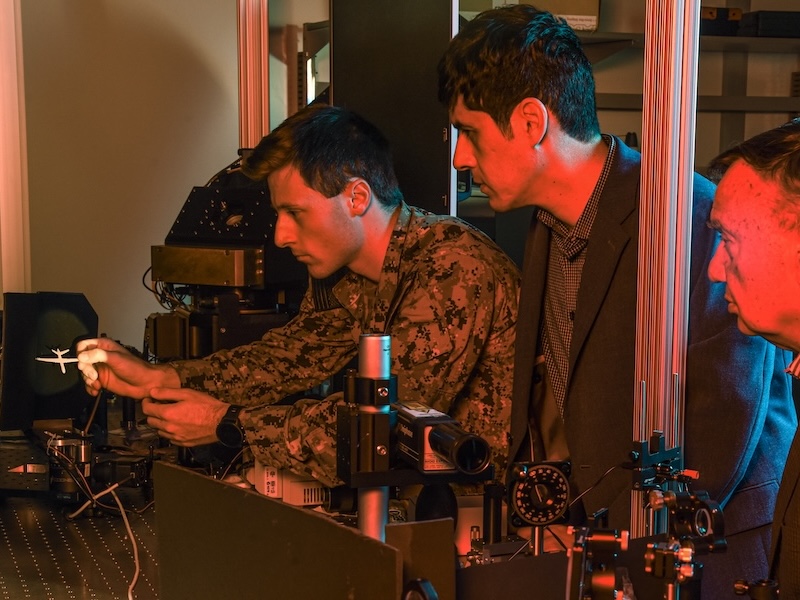AI-based Path Finding - NPS Online
AI-based Path Finding
Non-degree
Est.imated Completion Time: 3 days
Program Area: Cyber and Information Systems
Modality: In-person offering at sponsor site
Overview
The discovery of rare events is crucial to many applications, ranging from the verification of mission-critical systems to the collection of training data for machine learning. Discovering rare events is particularly challenging because alternative approaches, such as Monte Carlo methods and their randomized field-testing counterparts, are inefficient and expensive.
Some of the course topics that will be discussed include:
- The Cross Entropy search method identifies statistical distributions of rare events of interest, thereby enabling a range of specific application use cases: Runtime Verification and Validation of mission-critical systems, Autonomous Vehicles, Autonomous Drones, Air Traffic Control, and Nuclear Plants.
- Pathfinding for complex multi-agent applications in the presence of uncertainties.
- Pathfinding for applications where the underlying map changes during navigation.
- Pathfinding solutions where traditional dynamic programming methods (such as A*) fail.
- Fast generation of high-quality, high-variance synthetic data for machine learning classifiers.
- Generation of machine learning training data that enables uncertainty estimation for classifiers.
- Synthesis of rare events.
This course covers the principles and applications of the Cross Entropy search method, providing students with the tools and knowledge needed to effectively discover and utilize rare events in various high-stakes scenarios.
Prof. Doron Drusinsky
Holds a B.Sc. from Technion, Haifa, Israel (1983) and a Ph.D. from the Weizmann Institute, Israel (1988), where he was awarded the Gad Reshef Award. From 1988 to 1992, he worked for Sony Corporation. In 1993, he founded R-Active Concepts, Inc., a company providing diagrammatic embedded systems development and verification tools. R-Active Concepts was acquired by ISI/Wind River Systems (now owned by Intel) in 1997. In 1998, Dr. Drusinsky developed the first run-time lightweight verification tool, which was subsequently used by NASA and the Missile Defense National Team (MDNT). Between 2006 and 2010, he developed the StateRover development and runtime verification tool, used by the Missile Defense Agency and NASA. In 2010, he participated in the Department of Transportation’s Toyota Unintended Acceleration investigation, headed by NASA.
LCDR Matthew Litton
A Naval Cryptologic Warfare Officer and a Ph.D. student in the Computer Science Department at the Naval Postgraduate School. He holds a Bachelor of Science in Electrical Engineering (BSEE) in Computer Engineering from Grove City College and a Master of Science (MS) in Cybersecurity from Excelsior University. His doctoral research focuses on the verification and validation of autonomous systems for use in civilian and military applications.
Major Bud Daniel
A Marine Corps Harrier II pilot and a Master's student in the Computer Science Department at the Naval Postgraduate School. He holds a Bachelor of Science degree in Physics from Ursinus College. After commissioning in the Marine Corps, Major Daniel deployed to Japan with VMA-542 as part of the 31st Marine Expeditionary Unit and to Bahrain with VMA-223 in support of Operation Inherent Resolve. He has also served as a Naval Strike Instructor Pilot with VT-9. Currently, Major Daniel is focusing his master's studies on artificial intelligence. His thesis aims to assist pilots with pre-flight planning by automatically discovering optimal flight routes that avoid surface-to-air threat weapons engagement zone.
Learning Outcomes
Upon successful completion of this short course, participants will be able to:
- Determine if a problem satisfies the optimal substructure property.
- Assess whether a pathfinding problem can be solved using the A* algorithm.
- Define, in clear English, the constraints associated with one of the rare-event discovery problems covered in the course.
- Identify two cost functions – one for the Vanilla sample and one for the Perturbation sample – when employing the HybridPair method.
Other Information

Application Deadlines
No upcoming deadlines.
Academic Calendar
No upcoming events.
